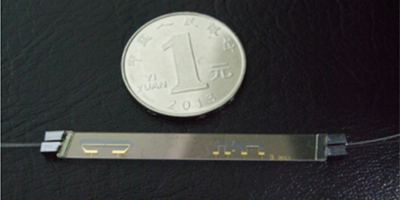Quantum Photonics on a Chip
Before quantum information technologies can become part of everyday life, quantum devices will need to become cheaper and more compact. The integration of quantum optical components into a solid-state chip would be a major step in that direction. Silicon-based chips, which can be integrated with existing CMOS electronics, would be a natural choice, but other materials may offer better performance. In particular, a larger optical nonlinearity would be needed to realize efficient sources of entangled photons—key components of any quantum system. As reported in Physical Review Letters, Ping Xu at Nanjing University, China, and co-workers have demonstrated a powerful alternative based on lithium niobate (LN)—a material sometimes heralded as the “silicon of photonics.”
The authors fabricated and tested a single LN chip containing elements for both the generation and the manipulation of entangled photons. Thanks to LN’s large nonlinearity, the chip features two efficient photon sources, generating a high flux of entangled photon pairs. On the same chip, these photons can be channeled and manipulated through components such as junctions and wavelength-selective filters, relying on LN’s mature waveguide technology. Further, the electro-optical properties of LN enable fast modulators that steer the photons along different channels and enable tests of the photons’ quantum coherence. Finally, periodic poling (the formation of LN layers with alternate orientation) allows the system to be tuned to resonate at a desired wavelength: the chip contains nine units working at nine different wavelengths, covering the most important bands of optical fiber communications. The researchers envision that LN could become the ideal platform for fully integrated quantum optics schemes. If so, the material could indeed become the “silicon of quantum photonics.” – Matteo Rini





